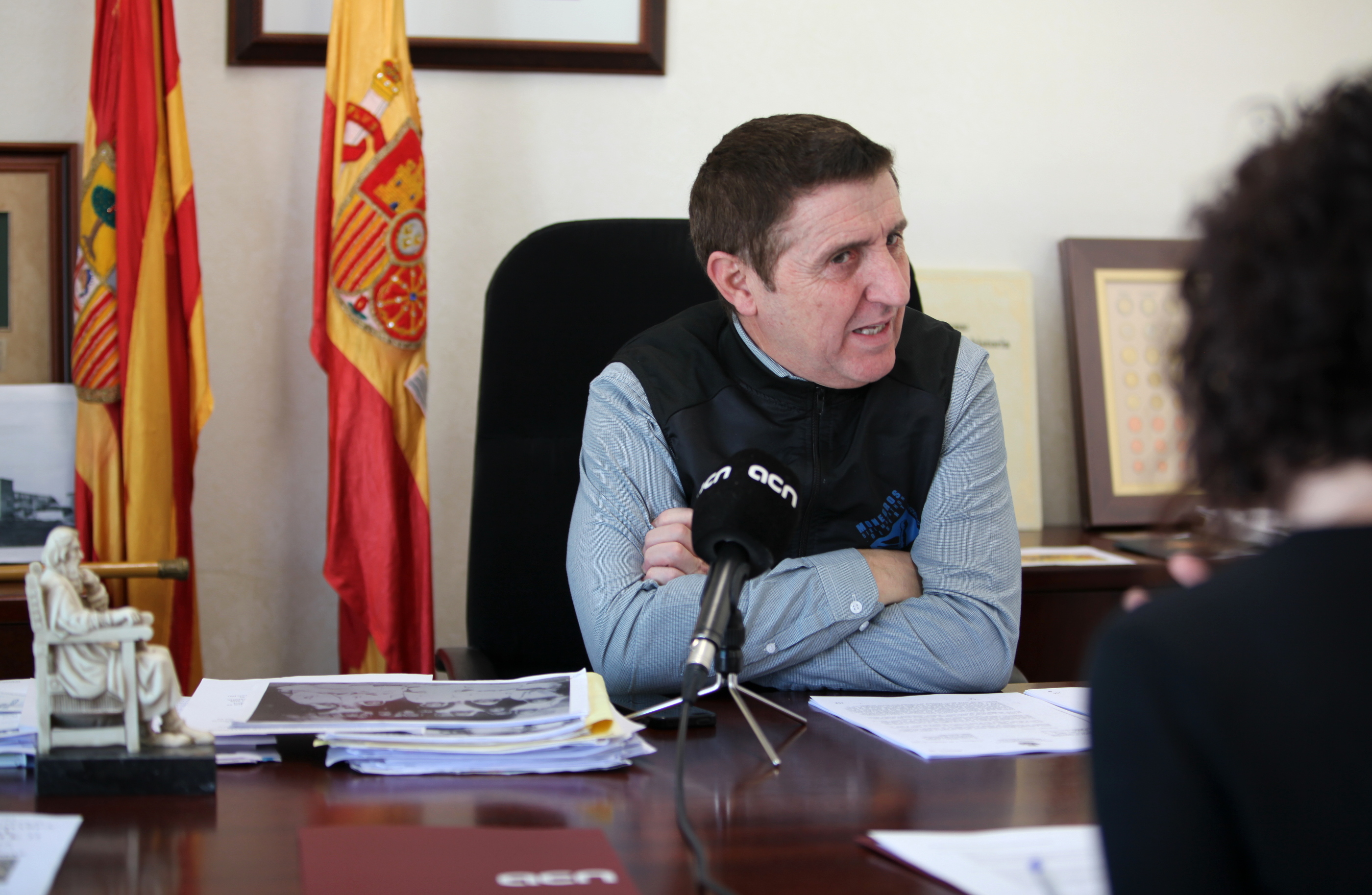Sixena mayor questions 'obsession’ over air conditioning for Romanesque artwork conservation
Ildefonso Salillas denies that the art was brought from Catalonia to Aragon as a result of the former’s self-rule being seized through Article 155

The mayor of Vilanova de Sixena, Ildefonso Salillas, stated in an interview with the Catalan News Agency (ACN) that the Aragonese government will invest new funds to install a new air conditioning system in the Sixena Monastery, in order to welcome fragile works of art dating back to the Middle Ages. However, Salillas said, this “improvement” would not be essential. “If the paintings were without air conditioning for eight centuries, I don’t get why there’s so much obsession now,” he said.
Hotly contested and very fragile
The works of art in question have become a topic of discussion over the years. Rescued from a fire that burned the Sixena monastery down during the Spanish Civil War, brought to Catalonia, restored, and subsequently legally bought, these items are however also claimed by Aragon, which contests that the transaction that accorded the Romanesque objects to Catalonia wasn’t legal, and that they belong back in Sixena.
The conditions of the Monastery of Sixena to welcome all of the works of art that it once housed has been one of the most hotly disputed arguments. The director of MNAC, the Barcelona museum whose walls hold some of the more fragile frescoes from Aragon, explained that Sixena “was once a monastery,” back in 1200, but it “now no longer is.” The structure itself, he continued, was “built on a dried lake bed,” which then leads to there being “a phreatic zone,” something which he said is “absolutely unsuitable to exhibit works of art.” Indeed, a judge ruled them too fragile to move without significant damage, partially because the renovation was not complete, nor was the correct air conditioning installed.
Article 155 “hasn’t benefitted anyone,” says Sixena mayor
The frescoes on the walls of the MNAC museum are temporarily blocked in Barcelona, but other paintings and works of art have already been returned, including some deemed too fragile to move without damage. Indeed, a large amount of the artifacts was relocated from Lleida to Sixena in December of last year, a transition which some attributed to Catalonia’s self-rule being seized by the Spanish government through Article 155.
However, Salillas disagrees with this interpretation. The Vilanova de Sixena mayor denied that Aragon only claimed art from Catalonia and not in other territories, and insisted that the 44 objects sent from the Lleida Museum to Aragon were not moved thanks to Article 155, a context that Salillas says “has not benefitted anyone.”
Only two ever left MNAC
As regards the works of art currently housed at the MNAC, Salillas noted that while the Catalan Museum will not move the frescoes to Sixena, between the ‘70s and the ‘90s they were however moved to New York and London. Acting as if he were one the Barcelona museum officials, he ironically said “I can take them down whenever I want, but to go to Sixena, that’s much closer, they cannot be taken down."
The MNAC, however, sustains that only some detachable fragments left the museum. Specifically, two pieces were sent to the Metropolitan Museum of Art in New York in 1970, one of which was sent to the East Coast museum again in 1997. The same two removable items were also put on display in 1984 in London.